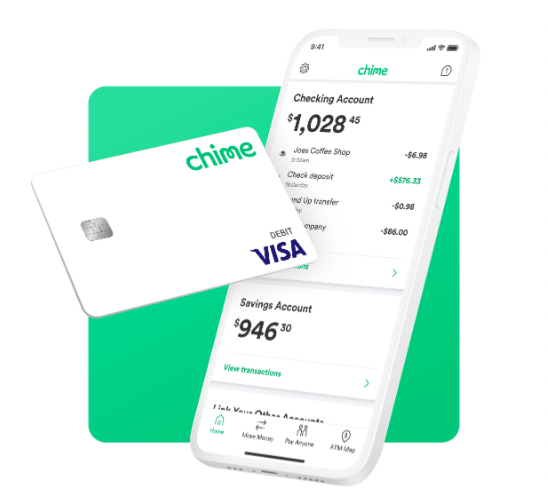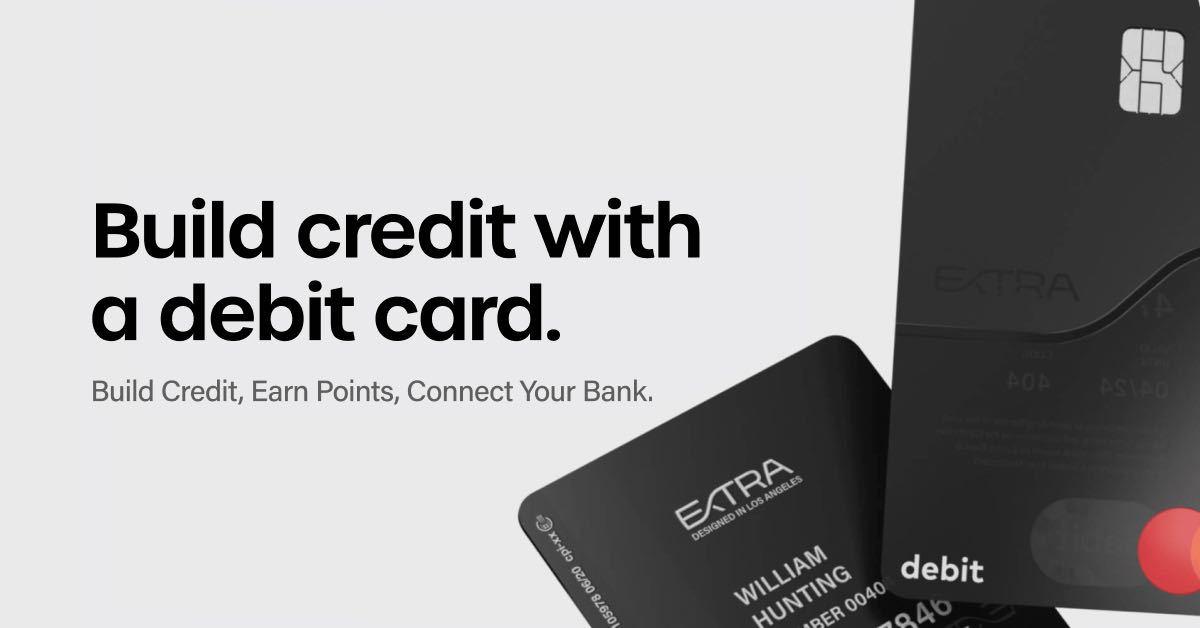How beneficial are debit and credit cards for kids and teens?
Case in point: We gave our teenage son a reloadable Chime debit card while abroad. He learned to manage a card and a banking app, bought what he needed, and it was much safer than carrying cash.
That said, don’t sign up for the first card you see. There are many credit and debit cards for kids, and it can be hard to know which one is best.
Want to figure out not just the best credit card for kids but the best option for your kid, or if a debit card might be better? Keep reading for a detailed review of popular cards, how they work, why you might want to get one for your child, and which ones are highly rated and why.
What if They’re Not Ready for a Credit Card?
For most kids, a kid debit card is be an easier starting point. Check out our top 3 debit cards for kids:
Card | Requirements | Notable features | Fees |
Parental permission, ages six to 18 |
|
| |
Parental permission, no age requirement |
| $4.95 (Basic plan) and $7.95 (Pro plan) | |
For young adults: Chime Visa Debit Card | Must be 18 to open (great for college-bound teens) |
| No monthly fees |
But before we get into more detail, let’s figure out once and for all if a credit card or debit card is right for your kid. Then, I’ll do a deep dive into the best options in both categories.
Credit Card For Kids: How Do They Work?
With record-high credit card debt for grownups, there’s a strong argument for educating children from an early age on how credit works and why debt hurts.
So, how do credit cards work for kids?
- Kids under 18 can’t get their own credit cards unless added as an authorized users to their guardian’s account.
- Some card issuers state a minimum age of 13 to 16 while some don’t give a minimum age at all.
- A credit card for a child who is an authorized user works much the same as a credit card for an adult. The child shares the spending limit with the primary cardholder, and they can start to build credit.
For most children, a credit card is a big step — one that’s better taken in their late teen years. If that’s the case, what are your options?
Credit Card for Kids: Why Get One?

In our case, we gave our child a reloadable debit card so that he had access to money while in a foreign country. It was a safer option.
Credit cards are a little riskier because there are fewer controls over spending. For older teens, however, learning how to use a credit card responsibly is a passage to sound financial management in adulthood, and that’s something we all need.
Bottom line: Debit cards are best for younger kids while older teens could learn more from the responsible use of a credit card.
Pros and Cons of Giving Your Child a Credit Card
Pros of Giving Your Child a Credit Card | Cons of Giving Your Child a Credit Card |
Education into how credit cards work | Few limits on spending |
Build a credit profile early | You and your child’s credit suffer if you fall behind on payments |
Access to cash; particularly useful in an emergency | Risk of theft and fraud |
Best Credit Card for Kids: 3 Top Picks
Our advice for younger kids is to start them off with a debit card because it’s simpler and safer. However, credit cards for teens are a great way to expose them, and here are four top picks.
1. Step Visa Card – Best for Teenagers Who Still Need Some Limits
- Overall rating: ⭐⭐⭐
- Requirements: Parental approval but no age requirement
- APR: n/a
- Rewards: n/a
- Annual fee: n/a
- Features: Bank account, credit/debit card with spending limit, mobile app
The Step Visa card offers a complete mobile banking experience for teens. It’s a great first credit card for teens, and the Step app is a must for the mobile generation. The Step Visa and bank account are free with no fees and no minimum deposit.

Spending Limits
The cardholder can only spend up to the amount that is in the step account, providing a built-in spending limit.
Parents can add funds to the Step account from another bank account, a debit card, Cash App, or PayPal. They can also monitor their child’s spending and freeze a child’s card.
Building Credit
Parents don’t have to open a separate checking or savings account for their teenager or add them as an authorized user to their own credit cards, so teens can build credit independently.
Who It’s Good For
The Step Visa card is great for teens who want to build credit yet need some controls in place for spending.
Who It’s Not Good For
This is not a great option for teens with significant savings because no interest is paid on the balance. Going with a debit card from a bank that offers a high-yield savings account is a better option.
Note: The Step Visa card does not offer a rewards program.
Pros | Cons |
Free bank account and Step card; no fees or minimum deposit | No rewards program |
Spending is limited to the amount in the Step Bank account | The Step bank account is not interest-bearing |
The Step card builds credit like a secured card | Out-of-network fees for ATM withdrawals |
2. Discover it® Student Cash Back – Best for Cash-Back Rewards
- Overall rating: 4/5
- Requirements: Be at least 18 years old, enrolled in a two- or four-year college, a U.S. citizen, a Social Security number, and verifiable independent income.
- APR: 0% intro APR on purchases for six months. Ongoing variable APR of 17.74% to 26.74%
- Rewards: 5% cash back on some retailers. Unlimited 1% cash back on all other purchases.
- Annual fee: n/a
- Features: Generous cash-back rewards, no fees, low introductory APR.
- A cash-back rewards credit card with no annual fee.
Notable features of the Discover it® Student Cash Back card are its cash-back reward program, low fees, and a free FICO score.

Cash-Back Rewards
This card’s biggest selling point is the dollar-for-dollar cash-back rewards program in the first year. So, if a student earns $75 in cash back, they could get $150 in total.
Also, there is no minimum spending requirement, maximum rewards threshold, or annual fee.
Few card issuers offer a rewards program without an annual fee. This makes the Discover it® Student Cash Back card notable.
Introductory APR
The card also offers a 0% intro APR period for six monthsThe card forgives the first late payment, so it works for quick learners who want to build credit.
Who It’s Good For
This card is great for students who can manage their spending and want a simple rewards program with no annual fee.
Who It’s Not Good For
This card is not for students who plan to study abroad. Although there are no foreign transaction fees, Discover is less widely accepted internationally than Visa and Mastercard.
Pros | Cons |
A rewards card with no annual fee | The cash-back reward categories change every three months making them hard to keep track of |
Forgiveness for first late payment | High and variable APR after the introductory period |
Low introductory APR | Not widely recognized abroad |
3. Petal® 2 Visa® Credit Card – Best for Disciplined Card Users
- Overall rating: 3/5
- Requirements: 18-year-old or older
- APR: 17.74% to 31.74% variable rate
- Rewards: 1% cash back on eligible purchases or up to 1.5% cash back on eligible purchases when they make 12 on-time payments, plus 2% to 10% cash back at select merchants
- Annual fee: n/a
- Features: Cash-back rewards, no fees, high credit limit
The Petal® 2 Visa® Credit Card builds credit if the balance is paid off each month.

Cash-back rewards, no fees, and a high credit limit make this card ideal for savvy kids who are ready to build up credit.
Cash-Back Rewards
The Petal® 2 Credit Card offers cash-back rewards with no fees. On-time payments are rewarded with higher cash-back earnings; however, the rewards structure is complicated
Building Credit
The credit limit with this card ranges from $300 to $10,000. If a cardholder has a high credit limit but doesn’t use it and makes on-time payments, this will boost their credit score because of the low credit utilization score.
It’s difficult to overstate the importance of building good credit. The Petal® 2 Visa® Credit Card’s low credit utilization score can boost a youngster’s credit score over time.
Who It’s Good For
This card is great for students who want to earn rewards and are disciplined enough to make timely payments.
Who It’s Not Good For
This card is not the best for students who might miss payments or carry a significant balance. There are late fees and the potential for higher interest payments.
Pros | Cons |
No credit history required | Potentially high interest charges |
No annual fees, late payment fees, or foreign transaction fees | Complex reward system |
Bonus rewards for on-time payments | No introductory rates or bonuses |
Credit Card vs. Debit Card for Kids: Which is Better?
Debit cards seem the better and safer option for kids, at least until they have a better understanding of how credit works.
Here’s a look at some top-rated prepaid debit and children credit cards.
Alternatives to Kids Credit Cards: 3 Top-Rated Options
Not ready to get a credit card for a kid? Check out these alternatives.
GoHenry
- Requirements: Parental permission, ages six to 18
- Fees: Monthly fee of $4.99 for an individual child and $9.98 for the family plan. A $1.50 fee for each ATM withdrawal, and a $4.99 fee to replace a card with a different design.
Two primary concerns with a pre-paid debit card and banking app for kids is ease of use and safety. GoHenry covers both. The app teaches young people how to manage money safely and securely with fun lessons in money management for kids aged K through 12.
What’s Good
Payments to the GoHenry account can be a one-time transfer or a recurring one. The app allows kids to set up and track payments for chores and set savings goals. For individualists, the GoHenry card is customizable.
Notable Features
- Engaging lessons on budgeting, investing, and borrowing safely.
- Savings goals.
- Parental controls-limits on where and how much your kid can spend.
- Budgeting for charitable giving.
Considerations
There are fees associated with this card. GoHenry has a monthly fee of $4.99 for the individual child and $9.98 for the family plan that covers up to four children. There is a $1.50 fee for each ATM withdrawal and a $4.99 fee to replace a card with a different design.
Bottom Line: GoHenry is a great teaching tool for kids, and it incorporates extensive safety precautions for concerned parents.
Copper Card (Copper Banking)
- Requirements: Parental permission, no age requirement
- Fees: $4.95 to $7.95/month
Copper Banking is a digital banking app that provides a debit card and an investing platform with the option to buy ETFs with as little as $1.
Account holders earn rewards for completing quizzes and watching educational videos, but they also earn 0.001% on their checking account balance (not great) and a $5 cash reward for each friend they refer to Copper.
Why It’s Good
Copper Banking teaches kids banking and investing fundamentals. There is no minimum deposit, and there are built-in parental controls.
Notable Features
- Parental controls, including purchase alerts
- Limits on ATM withdrawals and daily spending
- Automatically managed investments with a teen-and-kid-centric registered investment advisor
- Rewards on savings balances up to $5,000
Considerations
Copper Banking’s monthly fees are between $4.95 (Basic plan) and $7.95 (Pro plan). No interest is earned on account balances.
Out-of-network ATM fees apply, and a transfer to a linked debit card will incur a fee of 2.5% of the total amount plus $0.30 per transfer.
Bottom line: Copper’s value lies in its easy-to-use app and debit card and its kid and teen-centric approach to teaching and investing. However, it comes with a monthly fee and additional add-on fees, such as out-of-network ATM withdrawal fees.
Chime Visa® Debit Card – Best for Older Teens
- Requirements: Must be 18
- Fees: No monthly fee, no maintenance fee
As I noted earlier, we gave our kid a Chime Visa Debit card on our recent vacation, and it worked out brilliantly. Not only is there no monthly fee, but there are plenty of other great features that offer peace of mind and help kids develop financial know-how.

The one catch? You’ve got to be 18 to get one of these babies, so it’s best for older teens.
Why It’s Good
Not only does the Chime debit card for kids have no monthly fee, but overseas transactions are fee-free as well. There’s also an app so teens can pay on their phones.
Notable Features
- No monthly fees
- No maintenance fees
- 60K+ no-fee ATMs
- Real-time transaction alerts
Considerations
As noted above, this is an 18-and-over card. But given my positive experience with the card and its many appealing features, I felt it deserved a spot on the list.
BONUS: Acorns Early
This isn’t a debit card for kids, but Acorns is worth mentioning because it offers so many features that are great for helping kids learn about money.
As a parent or guardian, you can start investing in a child’s future as early as birth! Acorns does come with a $5 monthly fee, but it offers checking, retirement, and kids’ investing all in one easy-to-use app. Plus, Acorns offers a ton of financial literacy content, so in time they can graduate to more advanced offerings.
Final Word: Credit Card for Kids
Debit and children’s credit cards are practical and effective ways to teach good money management and help them build credit.
It’s probably best to start simply and give younger kids access to a debit card with parental controls. The best credit cards for kids are educational and easy to use.
For kids under the age of 18, parents must add them as an authorized user to their own credit card accounts for them to have a credit card. This option comes with added risk because both parties’ credit ratings will suffer if payments are not made on time.
FAQs:
Can I get a credit card for my child?
You can get a credit card for your child by adding them as an authorized user to your own account. An individual must be 18 years or older to apply for their own credit card.
How old do you need to be to open a credit card?
Typically, you must be at least 18 to open your own credit card account. Depending on the card issuer, those under 21 may have to meet some additional requirements to open a credit card.
How can I build my child's credit?
Obtaining a debit or credit card that reports to the three credit rating agencies can help build your child’s credit. Good credit is established when the card is used responsibly with regular payments.
Can a 12 year old have a debit or credit card?
A 12-year-old can have a debit card with their parent’s consent, but a credit card is only an option if they are added as an authorized user to their guardian's account.
Where to Invest $1,000 Right Now?
Did you know that stocks rated as "Buy" by the Top Analysts in WallStreetZen's database beat the S&P500 by 98.4% last year?
Our July report reveals the 3 "Strong Buy" stocks that market-beating analysts predict will outperform over the next year.









